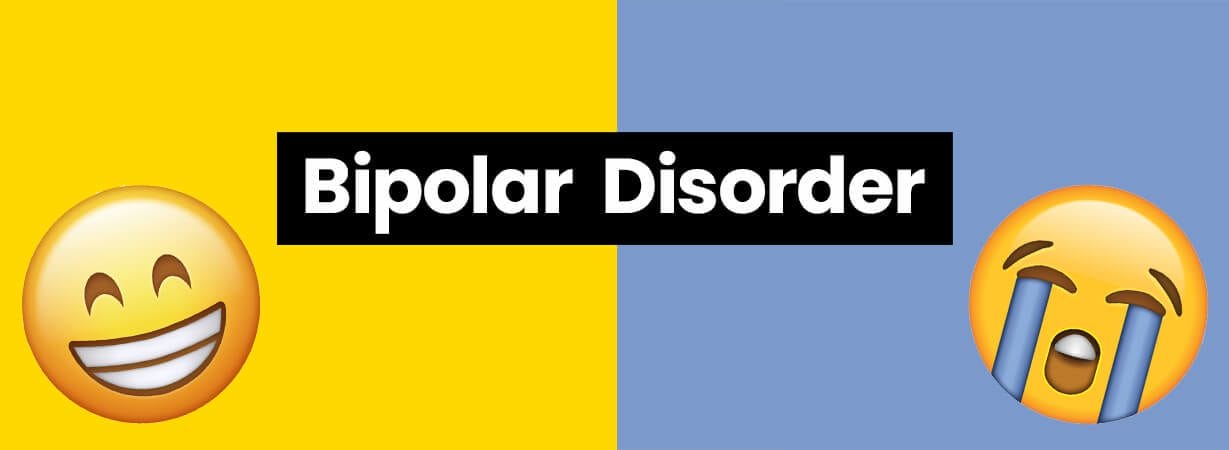Bipolar Treatment
Bipolar Disorder Treatment Center
Originally called manic-depressive illness, Bipolar Disorder causes extreme changes in mood, energy and levels of activity.
It also affects a person’s ability to manage their daily life. The National Institute of Mental Health (NIMH) estimates that 5.7 million adults, in the United States alone, suffer from this disorder.
Though bipolar disorder can start in early childhood or as late as midlife, the average age of onset is 25 years.
With mood swings ranging from heightened elation, also known as mania, to severe depression, those who go untreated can face debilitating personal and professional consequences, such as job loss, poor performance in school, failed relationships and even attempts at suicide.
People suffering from bipolar or other mental disorders are sometimes addicted to drugs or alcohol as well, which can induce additional problems.
It’s unclear whether one causes the other, but having both problems is considered a dual diagnosis condition.
While this can be problematic, with proper treatment, many people suffering from this treatable illness can lead normal, healthy and productive lives.

Bipolar Disorder Diagnosis
The Diagnostic and Statistical Manual of Mental Health Disorders (DSM) is published by the American Psychiatric Association (APA) and is the guideline by which the medical community diagnoses mental health issues.
The term “bipolar disorder” made its debut in the third edition of the DSM (DSM-III), published in 1980. This term replaced “manic depressive disorders,” and better represented the polarity between moods of mania and depression.
The DSM-5, published in May 2013, has also seen some changes in regard to bipolar disorder.
Bipolar and Related Disorders now have their own chapter. Previously, bipolar disorder and depression were lumped in a “Moods Disorders” chapter.
Additionally, the criteria for hypomanic and manic periods must now show an emphasis on not just mood, but also “changes in activity and energy.”
Types of Bipolar Disorder
The DSM-5 separates bipolar disorder into four specific categories. They include:
Bipolar I Disorder
Bipolar I Disorder is characterized by manic episodes lasting at least a week, or by symptoms of mania so severe that a person requires immediate hospitalization.
A person will also normally experience a depressive episode of about two weeks.
For a bipolar I diagnosis, a person’s manic and depressive symptoms must deviate from their normal behavior.
Bipolar II Disorder
Bipolar II Disorder is characterized by a cycle of depressive episodes shifting back and forth with hypomanic episodes, without experiencing full-blown manic or mixed episodes.
Other Specified Bipolar and Related Disorder
Other Specified Bipolar and Related Disorder was previously called “Bipolar Not Otherwise Specified” and this diagnosis is characterized by those with a past history of a major depressive disorder who meet all the requirements for hypomania except the duration of their episodes.
This can also include those exhibit too few symptoms of hypomania to be diagnosed with Bipolar II, though the duration of their episodes is four days or more.
Cyclothymia or Cyclothymic Disorder
Cyclothymia or Cyclothymic Disorder is characterized by at least two years of hypomanic episodes shifting back and forth with episodes of mild depression.
This diagnosis is considered a mild form of bipolar disorder because the symptoms do not meet the requirements for other types of bipolar disorder.
Common Symptoms of Bipolar Disorder
Bipolar disorder is a chronic illness, and while many people are symptom free between episodes, others might experience lingering signs of the disorder.
A manic state is when a person feels over excited and joyful for a period of time.
Depressive episodes bring about feelings of hopelessness and sadness, and there are also mixed episodes where a person experiences both mania and depression.
These changes in mood affect sleep patterns, energy levels and general activities. Often, these painful symptoms can be so severe that a person has difficulty functioning at home, work and school.
Common Symptoms of a Manic Episode
The symptoms of a manic episode may present in a variety of varying types and degrees, some of the most common are outlined below.
Keep in mind, the DSM-5 dictates that the mood AND changes in activity are necessary for a diagnosis.
- Sleeplessness
- Racing thoughts, talking very fast, jumping from one idea to the next
- Easily distracted and restless
- An unrealistic belief in one’s abilities
- Impulsive behavior, such as going on spending sprees or having impulsive sex
It’s fairly easy for close friends and family members who know the manic patient well to recognize many of these symptoms.
Examples of Depressive Episode Symptoms
Determining the symptoms of a depressive episode can be much more difficult than diagnosing a manic episode because the symptoms are not as clear-cut and can present as sadness or anxiety.
Still, a trained physician with an expertise in psychiatry will be able to understand the differences and make a sound judgment.
- Problems concentrating, remembering things or making decisions
- Extended feelings of worry and emptiness
- Restlessness and irritability
- Changes in eating, sleeping and other habits
- Suicidal thoughts or suicide attempts
A thorough understanding of the different types of bipolar disorder is necessary to properly treating the illness.
Without a proper diagnosis, it will be extremely difficult to prepare a course for treatment.
Bipolar Disorder Treatment
While the connection is unclear, substance abuse among those suffering from bipolar disorder is common.
A person medicating their symptoms with alcohol and drugs may, however, be further complicating their disorder and unintentionally extending these painful episodes.
At Inspire Malibu, our addiction specialists are equipped to treat a dual diagnosis of bipolar disorder and addiction.
Many treatment centers refuse to treat patients with a combination of mental illness and addiction because they don’t have doctors credentialed in both areas.
Every patient receives a thorough psychological evaluation by our physicians to determine the underlying causes of the condition.
They receive an individual treatment plan that addresses their unique situation and allows recovery to begin.